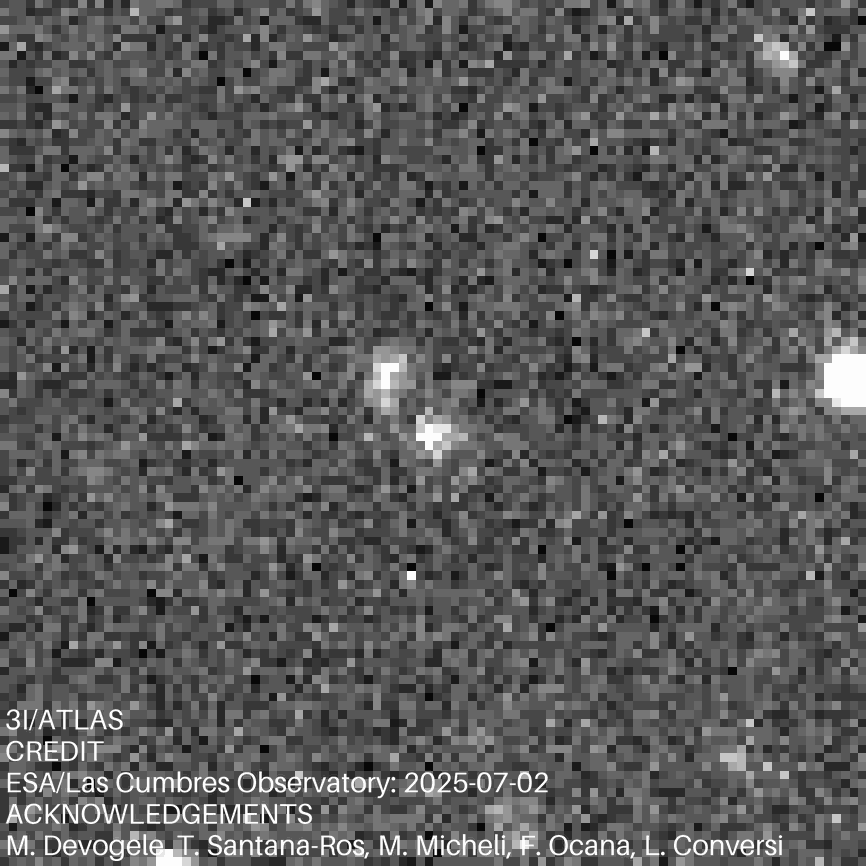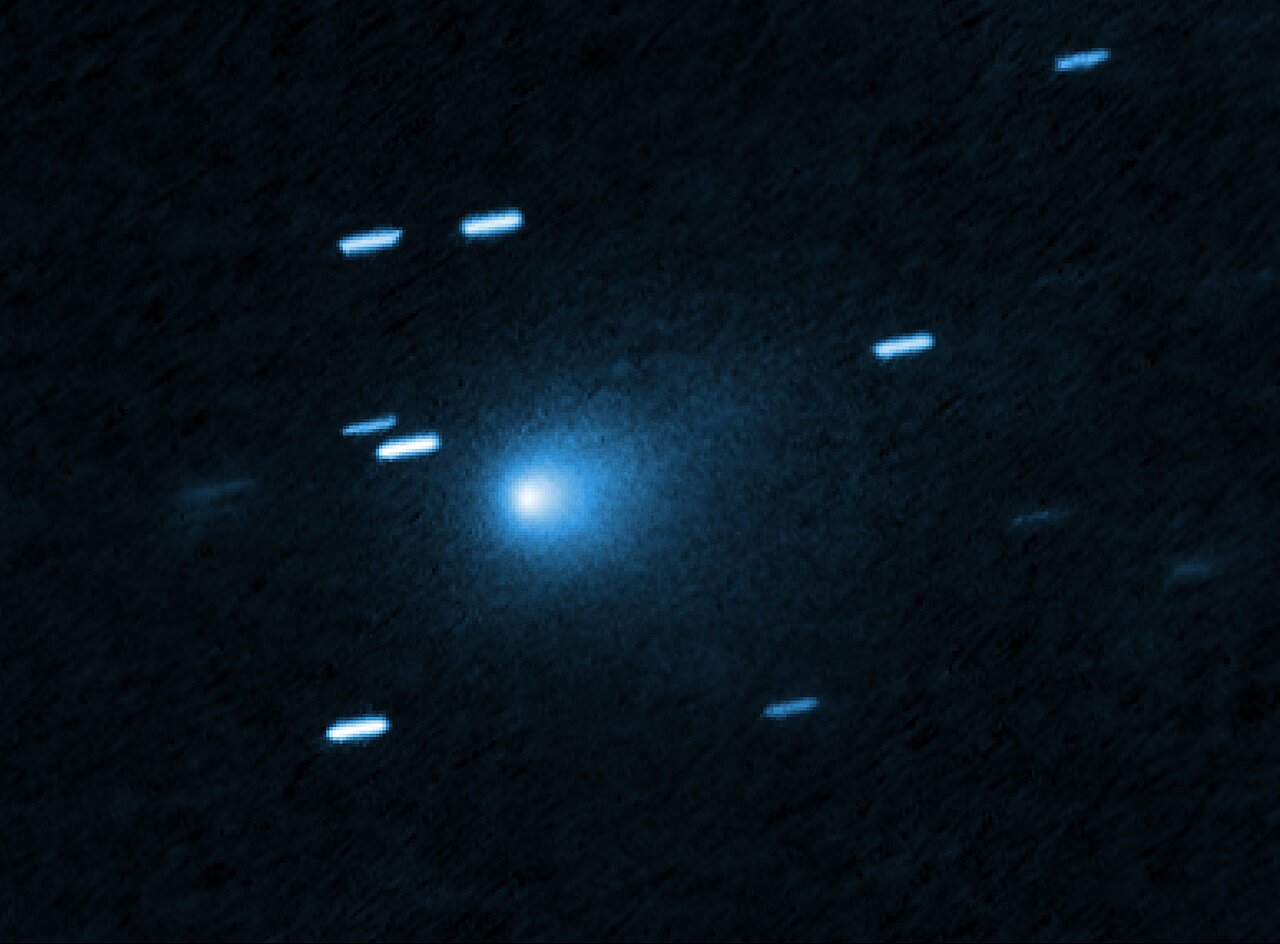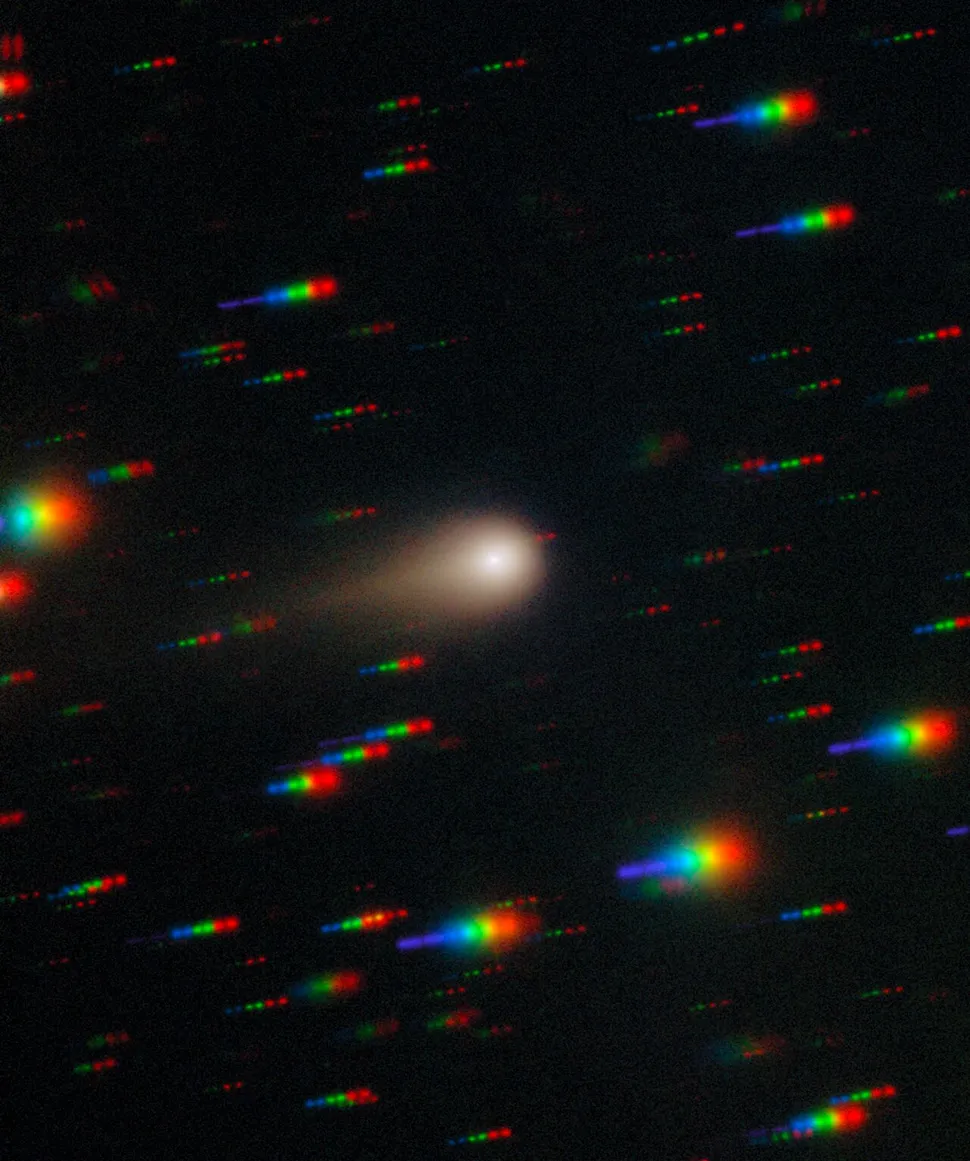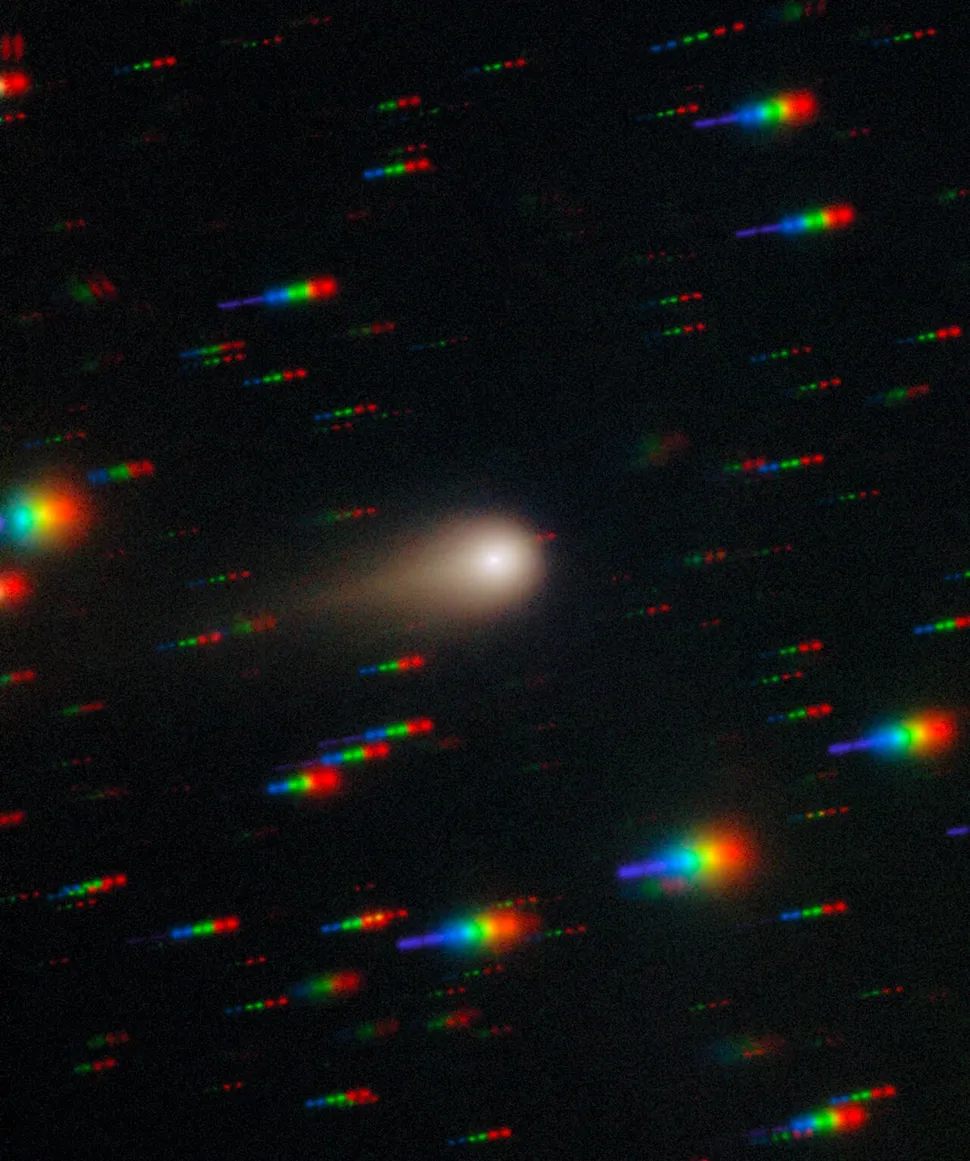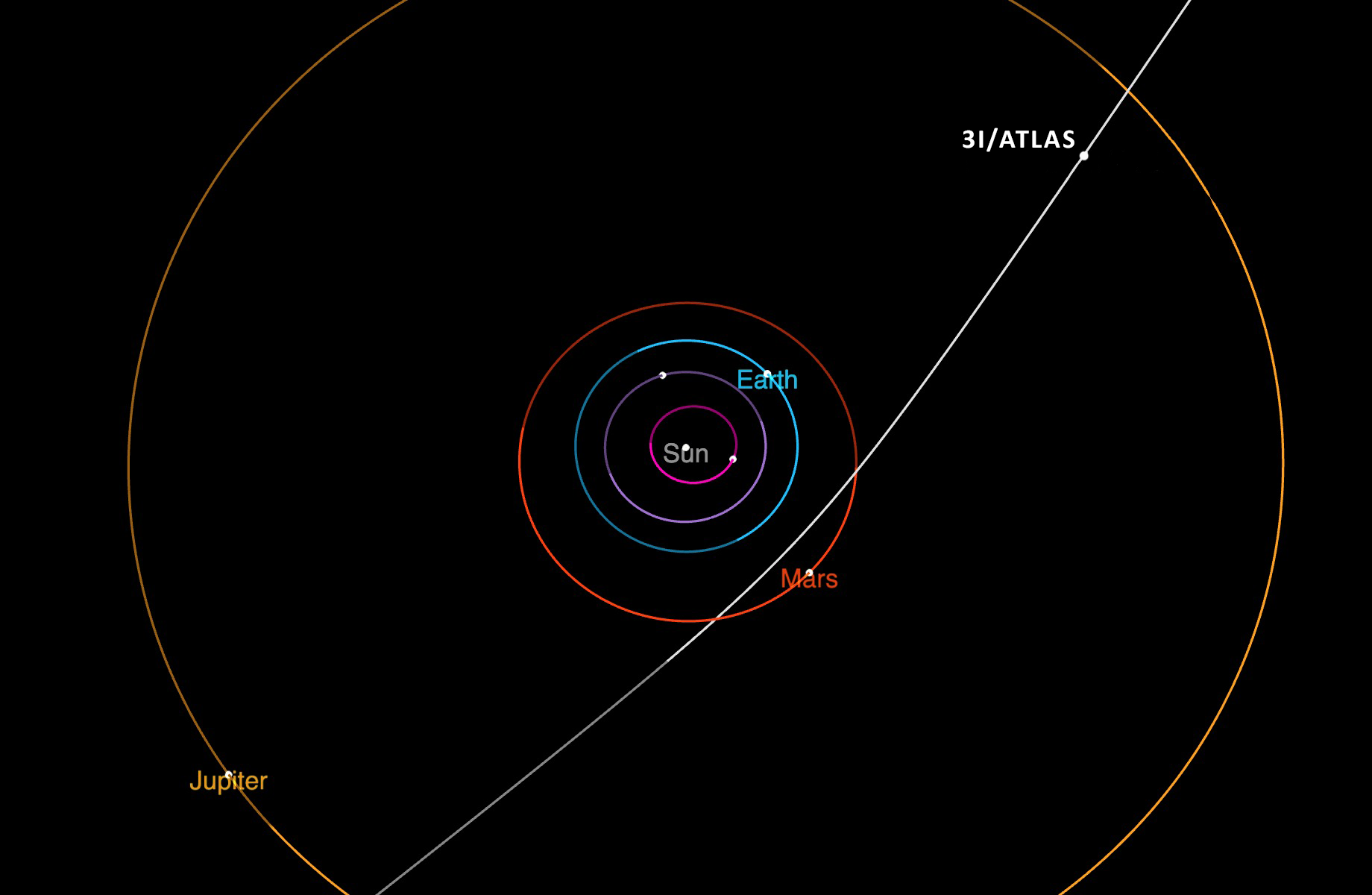Solarstrike
Member
3I/ATLAS, also formally designated C/2025 N1 (ATLAS), is the third interstellar object (ISO) ever discovered passing through our Solar System, following 1I/ʻOumuamua and 2I/Borisov. It was first spotted on July 1, 2025, by the Asteroid Terrestrial-impact Last Alert System (ATLAS) telescope in Chile. Astronomers are racing to study 3I/ATLAS with telescopes like Hubble and Webb as it is a rare opportunity to gather data on a pristine object from another star system, which could provide new clues about the composition and formation of planetary systems beyond our own. What could this thing be? The speed of it currently is roughly 130,000mph (about 210,000 km/h) faster than anything ever recorded through the solar system. In the .gif image is appears to have satellites (planetoids or moons?) orbiting it. I'm not sure the time scale however but according to Mr. Google, the object rotation period is 16.16 ± 0.01 with an observed lightcurve amplitude of about 0.3 magnitudes.
Key Characteristics and Interstellar Nature
- Origin: The "3I" in its name stands for "third interstellar," confirming its origin from outside our Solar System. It has been drifting through interstellar space for billions of years.
- Orbital Trajectory: Its interstellar nature is confirmed by its highly hyperbolic trajectory, which is an open, unbound path. This is indicated by its high orbital eccentricity of over 6.1 (compared to 1I/ʻOumuamua's 1.2 and 2I/Borisov's 3.4), meaning it is moving too fast for the Sun's gravity to capture it. It will pass through the Solar System and return to interstellar space.
- Speed: When discovered, it was moving extremely fast, at a hyperbolic excess velocity of about 58 km/s (36 mi/s) relative to the Sun, making it faster than both of its predecessors.
- Classification: It is currently classified as a comet because observations have shown signs of cometary activity, including being surrounded by a fuzzy cloud of gas, ice, and dust known as a coma.
- Size: Early estimates suggest 3I/ATLAS is significantly larger than the previous two ISOs. Its nucleus diameter has been estimated to be up to 3.5 miles (5.6 kilometers) or larger, though its exact size is difficult to measure due to the surrounding coma.
Journey Through the Solar System
- Closest Approach to the Sun (Perihelion): 3I/ATLAS is projected to make its closest approach to the Sun on October 29, 2025, at a distance of approximately 1.36 AU (Astronomical Units), which places it between the orbits of Earth and Mars.
- Closest Approach to Earth: It will make its closest approach to Earth on December 19, 2025, but it will remain at a safe distance of about 1.8 AU (around 170 million miles or 270 million kilometers).
- Non-Threatening: 3I/ATLAS poses no threat of impact to Earth.
Last edited:

